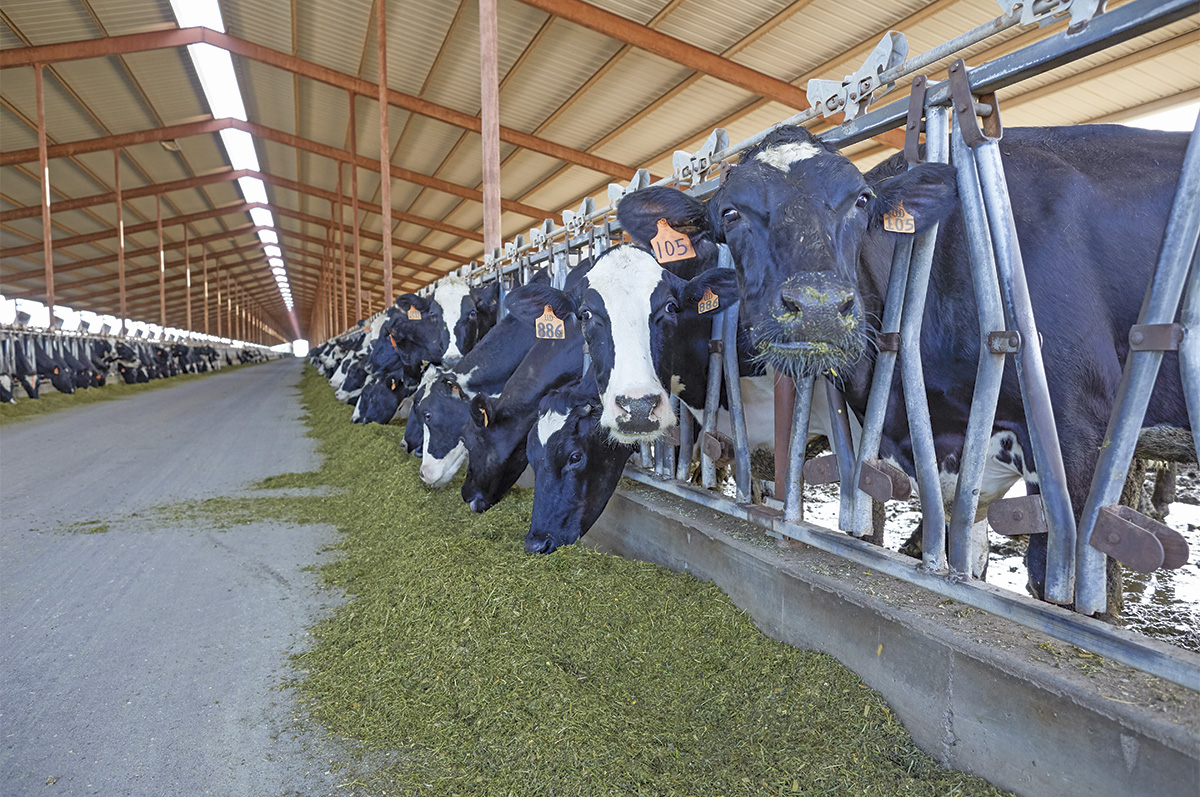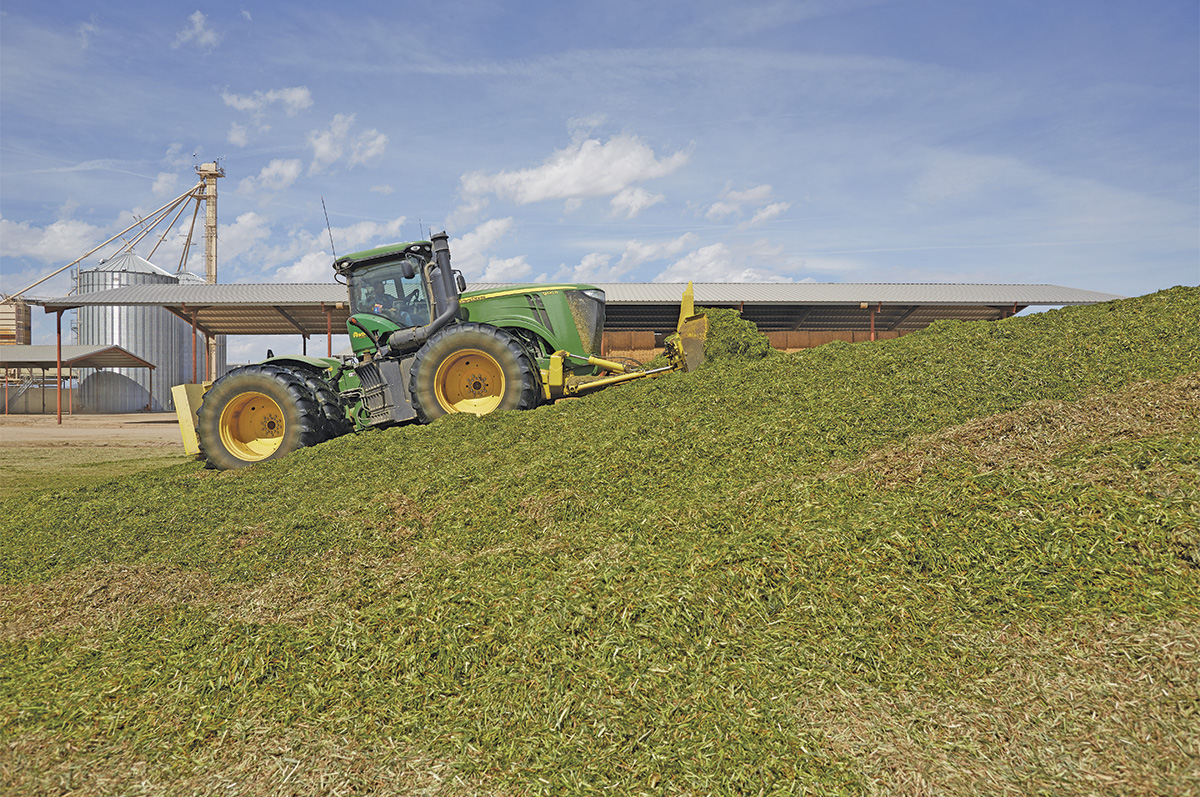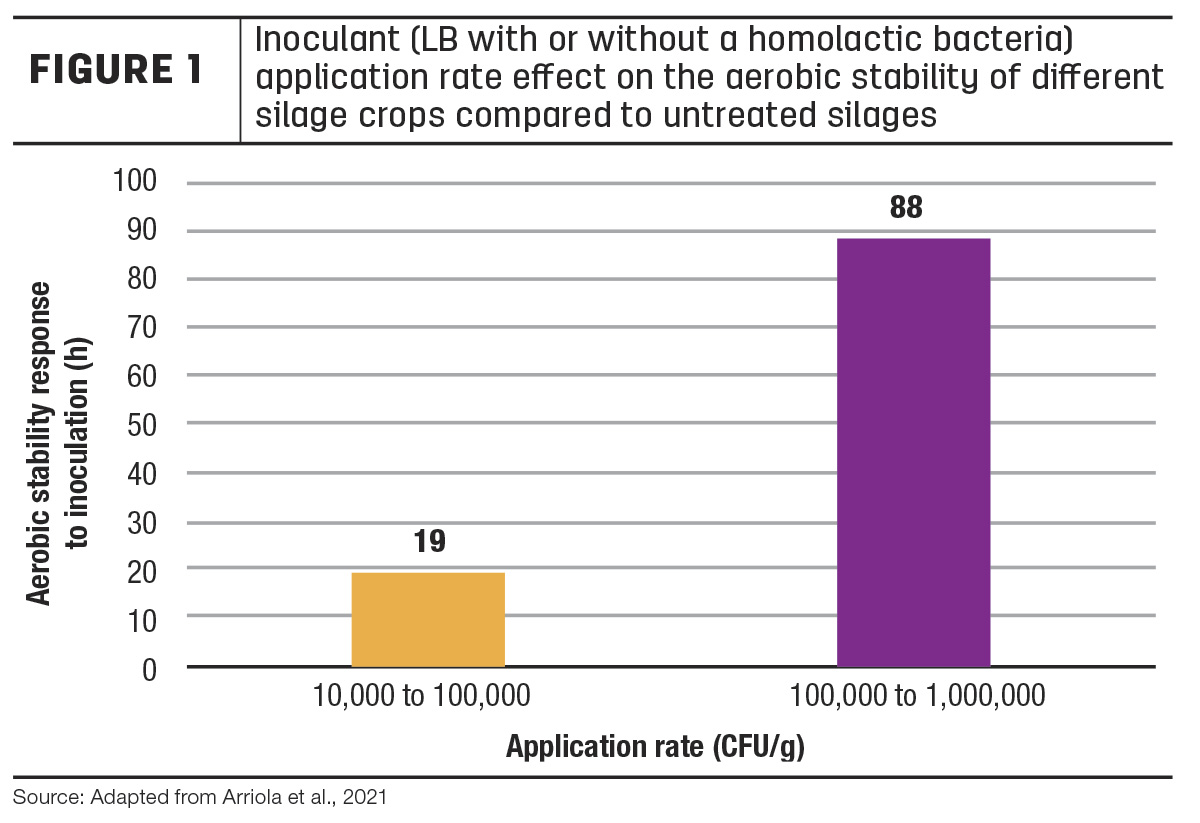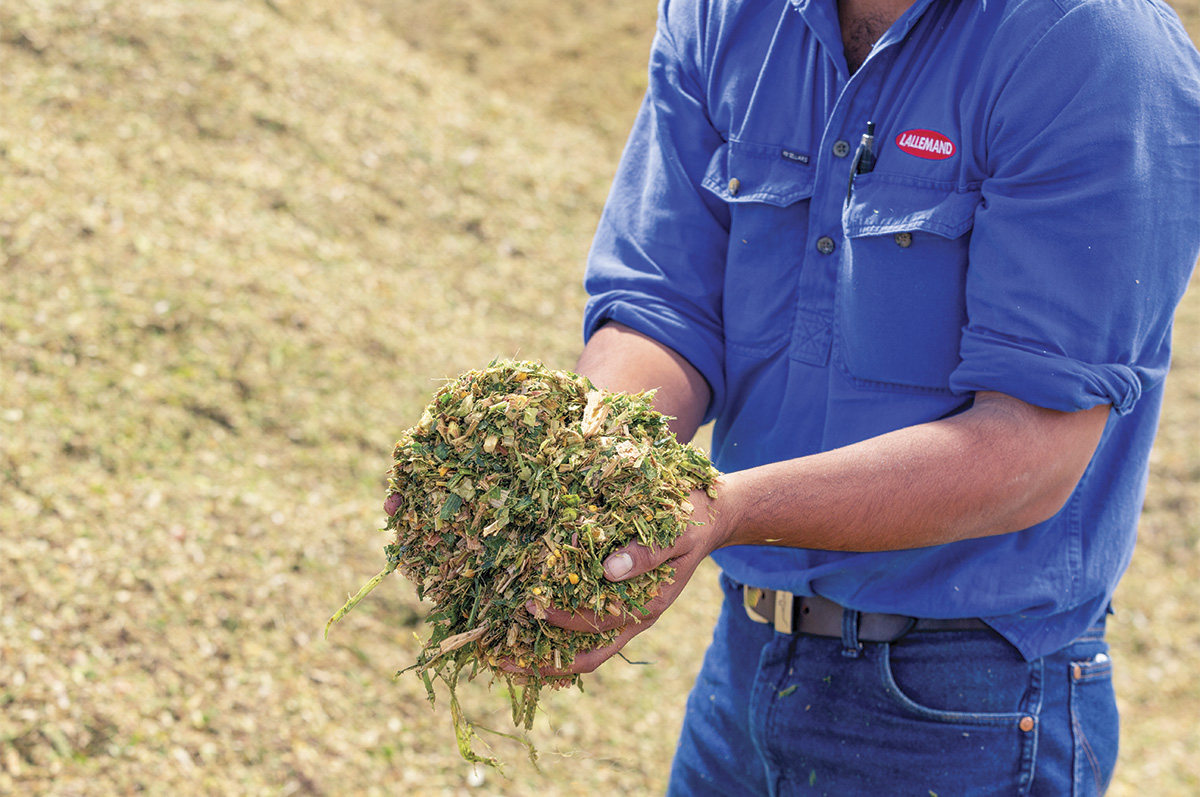Ensiled forage crops are the cornerstone of ruminant nutrition, providing the majority of the ration in high-producing herds. Preserving forage crops through ensiling offers a valuable way of maximizing nutrient retention and providing consistent year-round feedstuffs. Effective management, including the use of proven inoculants to manage the ensiling process at the microbiological level, safeguards your investment, maximizes time and resources, and is critical for optimizing your bottom line.
Understanding forage preservation: Unraveling the ensiling process
The goal of ensiling forage crops is to preserve as much dry matter (DM) and nutrients as possible, from the field to feedout. Production of high-quality silage involves winning a war fought on a microscopic level between the “armies” of microbes that occur naturally. Forage inoculants help by reinforcing the beneficial bacteria in this fight. These products mostly contain lactic acid bacteria (LAB) that provide an efficient front-end fermentation to maintain feed quality and hygiene. During ensiling, LAB convert simple sugars into organic acids, primarily lactic acid. This is key in an effective fermentation process, to bring down the pH quickly, and drive maximum DM and nutrient retention, by inhibiting the growth of undesirable, wasteful microbes, including clostridia, enterobacteria, bacilli, yeast and molds.
Inoculants contain specific strains of LAB, ideally selected for and proven to address the two major challenges in silages: driving the ensiling fermentation (homolactic LAB) and enhancing aerobic (feedout) stability by producing controlled levels of spoilage-preventing products, e.g., acetic acid.

The goal of ensiling forage crops is to preserve as much dry matter (DM) and nutrients as possible, from the field to feedout. Photo courtesy of Lallemand Animal Nutrition.
Traditional inoculants: Spearheading fermentation with precision
Traditional, or homolactic, inoculants produce lactic acid very efficiently, dropping the pH of the ensiled forage quickly. Selected specific strains of LAB, such as Pediococcus pentosaceus NCIMB 12455, are proven to rapidly convert major plant sugars, like glucose and fructose, to lactic acid only, with no wasteful side products, maintaining nutrient and energy levels and minimizing DM losses.
Research-proven specific homolactic inoculants enhance fermentation quality, improving retention of DM and nutrients, even in challenging crops like low-DM forages and legumes – such as alfalfa – that provide a greater resistance to pH drop than whole-plant corn and that may also be contaminated with soil. These crops are more prone to problems such as growth of clostridia, which can lead to protein degradation and production of biogenic amines, in addition to the production of butyric acid, which can even make the feed unsuitable for consumption by much of the herd.

Using carefully chosen strains of homolactic lactic acid bacteria (LAB) can make the fermentation process quicker and more effective during ensiling. Photo courtesy of Lallemand Animal Nutrition.
Using carefully chosen strains of homolactic LAB can make the fermentation process quicker and more effective during ensiling. This is especially true when these LAB strains are paired with enzymes delivered at levels to help produce the free sugars needed for acid production. These enzymes typically target the fiber portion of the plant and can potentially aid with fiber digestibility in addition to increasing availability of soluble sugars to drive the growth and fermentation of the beneficial bacteria.
Look for an application rate of 100,000 cells of homolactic LAB per gram of forage or greater for front-end fermentation inoculants; a meta-analysis published in the Journal of Dairy Science showed that inoculation at this level or higher resulted in increased milk yield, but it had no effect on aerobic stability. This confirmed the minimum effectiveness level, recognized by university researchers, and is based on using strains proven to dominate the fermentation.
Spoilage-inhibiting inoculant strains: Fortifying feedout stability
Lactobacillus buchneri is a lactic acid bacterium known to prevent heating and spoilage in silage when it's exposed to air. L. buchneri converts some of the lactic acid produced in the initial fermentation to acetic acid during the storage phase. This has strong antifungal properties, especially coupled with the low silage pH, and ensures stability during feedout. L. buchneri NCIMB 40788 is the only inoculant strain that has been reviewed by the Food and Drug Administration and allowed to claim improved aerobic stability. This is linked to high application rates, i.e., 400,000 cells per gram for silage, 600,000 cells per gram for high-moisture corn (HMC) (Figure 1).

Combination inoculants, which blend L. buchneri with homolactic bacteria to provide both a fast, efficient fermentation and feedout stability, are commercially available. Specific strain combinations have demonstrated their effectiveness in independent trials across a wide range of forage crops, and they are adept at managing the initial ensiling fermentation process and maintaining feed stability during storage and feeding. Look for research proof of efficacy.
Managing your inoculant
It’s not just about choosing a proven inoculant; proper care and handling are crucial for maximizing their effectiveness on your farm. These helpful bacteria are living organisms, and for optimal performance, you need to meet their needs for complete viability. It's important to strictly follow the manufacturer's guidelines for storing and applying inoculants because they will impact the bacteria's ability to survive and work effectively. Protecting inoculants from excessive heat, moisture and sunlight preserves their effectiveness, ensuring consistent excellence in preserving forage.
Temperature management during application is also key to getting the best results. Research has shown that temperature variations can greatly affect bacterial performance. Therefore, it's essential to maintain the ideal water temperature during mixing and application to ensure the bacteria remain viable and effective. Studies have demonstrated that temperatures above 90°F start to damage the lactic acid bacteria, reducing their ability to ferment and preserve forage quality effectively.
 Research-proven specific homolactic inoculants enhance fermentation quality, improving retention of DM and nutrients, even in challenging crops like low-DM forages and legumes – such as alfalfa – that provide a greater resistance to pH drop than whole-plant corn and that may also be contaminated with soil. Photo courtesy of Lallemand Animal Nutrition.
Research-proven specific homolactic inoculants enhance fermentation quality, improving retention of DM and nutrients, even in challenging crops like low-DM forages and legumes – such as alfalfa – that provide a greater resistance to pH drop than whole-plant corn and that may also be contaminated with soil. Photo courtesy of Lallemand Animal Nutrition.Selecting the right inoculant: Tailoring solutions to your operation
Choosing the appropriate inoculant for your needs requires careful consideration of various factors, including history of local and specific challenges, forage type, climatic conditions, possibility of silage being relocated and storage facility types. Choosing a silage inoculant based on third-party verified data is paramount for ensuring optimal silage quality and herd performance. Third-party verification provides an objective assessment of an inoculant’s effectiveness. Data from reputable sources – such as universities, agricultural research centers and peer-reviewed studies – offer a transparent view of the inoculant’s performance. By relying on verified data, producers can make informed decisions backed by evidence.
Whatever inoculant you select, pay attention to the information provided on the label (bacterial species and concentration, enzyme activity levels, storage recommendations, mixing/application instructions and shelf life). By embracing the best practices in inoculant use and management, you can lay the foundation for sustained forage quality and herd productivity for years to come.
References omitted but are available upon request by sending an email to the editor.










